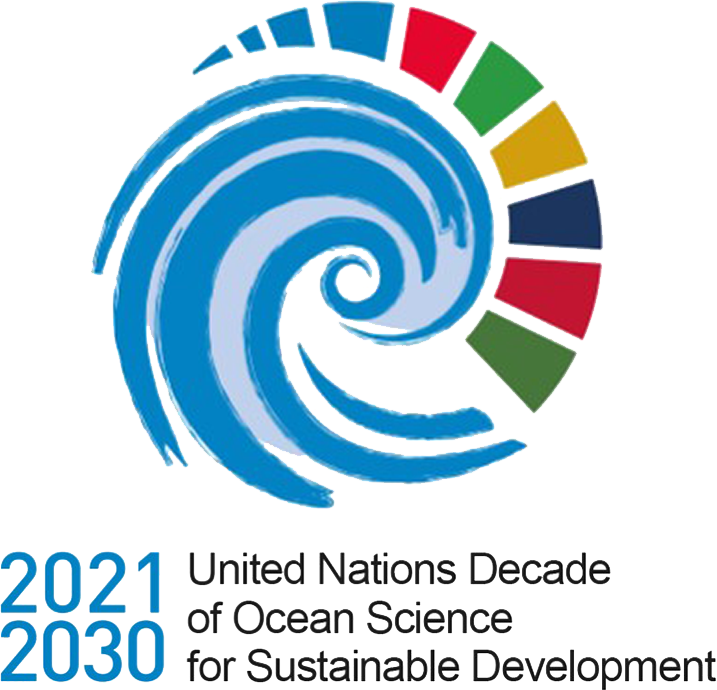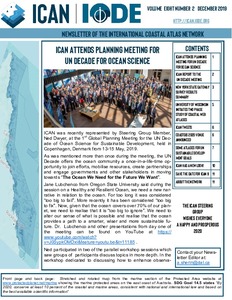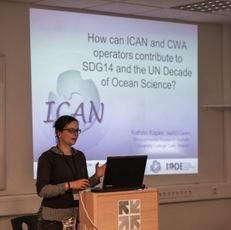Potentials and Limitations of Coastal Web Atlases
Issue-Based Presentations
Government Support for Coastal Atlases (3.3 Mb pdf)
presented by Tony Lavoi, NOAA Coastal Services Center, South Carolina, USA
Abstract:This presentation will focus on a series of federal efforts to coordinate and provide enhanced access to coastal and marine data within the United States. The presentation will cover the Federal Geographic Data Committee (FGDC) and the development of the National Spatial Data Infrastructure (NSDI), highlighting the role of ocean and coastal geospatial data within what to date has been a terrestrial focused effort. Information will be provided on both Geospatial One-Stop, a federal E-government project to improve the ability of the public and government to use geospatial information, and the National Ocean Service (NOS) Data Explorer, the primary Internet portal to obtain NOS spatial data. There will also be a discussion of the Interagency Working Group on Ocean and Coastal Mapping efforts to create an inventory of US ocean and coastal mapping programs. Lastly information will be provided on some recent activities within the Integrated Ocean Observing Systems (IOOS) community on data standards and transport systems.
URLs: www.csc.noaa.gov (NOAA Coastal Services Center)
www.nos.noaa.gov/dataexplorer (NOS Data Explorer)
www.geodata.gov (Geospatial One-Stop)
www.fgdc.gov (Federal Geographic Data Committee, FGDC)
www.csc.noaa.gov/mcsd (FGDC Marine & Coastal Spatial Data Subcommittee)
www.csc.noaa.gov/mbwg (FGDC Marine Boundary Working Group)
ocean.ceq.gov/actionplan.pdf (U.S. Ocean Action Plan)
ocean.ceq.gov/actionplan.pdf (U.S. Ocean Action Plan)
www.ocean.us/cir (Ocean.US Community Information Repository)
www.csc.noaa.gov/geotools (Coastal GeoTools '07 Conference in March 2007)
Streaming Video: Tony.wmv
End Users of MIDA - A Government Perspective (4.23 Mb pdf)
presented by Trevor Harrison, Environment & Heritage Service, Northern Ireland, UK
Abstract: Government agencies in Northern Ireland are responsible for the management and conservation of the coastal and marine environment; this obligation arises out of government’s commitment to meet international agreements as well as European and national legislation. Sound environmental information is vital for sound management decisions regarding the marine and coastal environment; it is also important for monitoring the effects of these management decisions as well as reporting these results to stakeholders and the general public. This information is typically presented or required in a simplified summary format. This simplified summary information, however, must be based on sound, quality data; the procedures followed in producing the summary information must also be scientifically auditable.
URLs: www.ehsni.gov.uk | www.jncc.gov.uk (UK Nature Barometer)
Streaming Video: T.Marrison.wmv
Institutional Barriers to the Irish Spatial Data Exchange (ISDE) Project (3.0 Mb ppt)
presented by John Evans, Marine Institute, Galway, IRELAND
URLs: www.isde.ie (ISDE)
Abstract: The Irish Spatial Data Exchange is a discovery meta-data service for spatially referenced data sets in Ireland. The Exchange was developed in partnership by the Marine Institute, the Geological Survey of Ireland, the Environmental Protection Agency and the Coastal and Marine Resources Centre at UCC using funds provided by the Information Society Fund. In this presentation John will give an overview of the Exchange and speak about the mainly non-technical institutional problems that arose during the Exchange's development.
URLs: 62.77.188.181/ISDE/ (ISDE Metadata Search)
sdec.reach.ie/rigclassification (Services & Data Exchange Catalogue, SDEC)
www.marine.ie (Marine Institute)
Streaming Video: J.Evans.wmv
Scalability and Automation: Cyberinfrastructure for an Imperfect World (3.4 Mb pdf)
presented by Steve Miller, Scripps Institution of Oceanography, USA
Intellectual Property Issues (24 Kb ppt)
presented by John Helly, San Diego Supercomputer Center, USA
Abstract: Since the launching of the SIOExplorer online archive five years ago, the collection has grown to hold the data from 693 expeditions by the Scripps Institution of Oceanography (SIO), dating back to 1953. The bulk of the collection comes from multibeam swath mapping of the seafloor (300 expeditions), but the SIOExplorer Digital Library holds 102,000 objects from many diverse sensors, as well as documents and images. The collection is accessible with a Java CruiseViewer graphical interface over a global map, as well as from a webform or from Google.
While initially it appeared that the sheer volume of data from 300 multibeam expeditions would be the biggest obstacle, in practice it turns out that most of the problems derive from the complexity of the data. We have faced more than a few challenges in automating the building of the digital collections over a diverse set of scientific domains. During this span of 53 years there has been a continuing evolution of sensors, recording media, vessels, careers, naming conventions, and cumbersome mixtures of intermediate and final data products. In addition to the SIO Cruise Collection, the SIOExplorer Digital Library now includes federated collections for the historic SIO Photo Archives, the SIO Marine Geological Samples (dredged rocks and cores), the EarthRef Seamounts and an Educator’s Collection of classroom resources for plate tectonics.
These efforts would have been impossible, or at least cost-prohibitive, without the help of the emerging field of Cyberinfrastructure. A metadata template file (mtf) synchronizes the arbitrary digital objects (ado’s) with a structured approach to metadata. Scalability is insured by the structured mtf approach, allowing new classes of data to be added or entirely new collections to be built, without redesigning the digital library code. Data files have been automatically identified and metadata harvested with very little human intervention, using a set of prioritized based on directories and filenames.
We are now in the midst of a transition to a second generation mtf approach, which makes greater use of formal controlled vocabularies, thereby insuring even greater scalability. A recent award “Multi-Institution Testbed for Scalable Digital Archiving,” is supporting the development of a related collection at the Woods Hole Oceanographic Institution (WHOI) which will provide online access to more than 5000 explorations of the seafloor, including Alvin submersible and Jason ROV data, along with WHOI cruises. A recent breakthrough has enabled federated searches across the SIOExplorer and the WHOI collections, as well as a collection of Arctic data at Oregon State University. Funding for the testbed is from the DIGARCH initiative, a joint program of NSF and the Library of Congress, NSF IIS 0455998.
URL: SIOExplorer.ucsd.edu
Streaming Video: S.Miller_J.Helly.wmv
Atlas Design and Usability (5.96 Mb pdf)
presented by Liz O'Dea, CMRC, Cork, IRELAND
Abstract: One of the key challenges of developing a coastal web atlas is its design and usability to meet both the owner’s and users’ needs. Depending on these needs, effective atlas design can be as simple as easy-to-navigate web pages with static maps, or as complex as providing interactive advanced GIS functionality. The interface should make access to data and information intuitive for the users, taking into consideration their technical skills, interests and reasons for using the atlas. Simultaneously it should deliver the data and information efficiently to meet the purpose of the atlas. Obtaining feedback from the target atlas audience throughout the development process is important to its success in order to ensure that both the owner’s and users’ needs are met.
Atlas design is not limited to the visible web interface. The design of the components behind the scenes is important for the stability and speed of the system. Time investment is needed to research hardware and software options (and their combinations) which are the most suitable. Consideration must also be given towards the development of a tailored database management system to ensure the efficient management of data (e.g. adding and updating data and metadata, data size and quantity) as well as supplemental information (e.g., related documents and tools).
This presentation will discuss these issues more in depth, focusing on the experience gained through the development of the Marine Irish Digital Atlas.
URL: mida.ucc.ie
Streaming Video: L.Odea.wmv
Coastal Atlas Tools (9.9 Mb ppt)
presented by Tanya Haddad and Paul Klarin, Oregon Ocean Coastal Management Program, USA
Abstract: The Oregon Coastal Atlas, a collaboration of the Oregon Coastal Management Program, Oregon State University and Ecotrust, is an interactive map, data, and metadata portal targeted at coastal managers, scientists, and the general public. The site was developed to meet long-standing needs in the state for improving information retrieval, visualization and interpretation for decision-making relating to the coastal zone. It has the ambitious goal of being a useful resource for the various audiences that make up the management constituency of the Oregon Coastal Zone. The site provides background information for different coastal systems, as well as the expected access to interactive mapping, online geospatial analysis tools, and direct download access to an array of natural resource data sets relating to coastal zone management. Therefore as a portal, the Oregon Coastal Atlas enables users to search and find data, but also to understand its original context, and put it to use via online tools in order to solve a spatial problem. We will describe in detail the various online tools of the atlas, some that are used for viewing data, some that are used for geospatial analysis; and tools for a diverse audience– some best suited for coastal planners and researchers, some for contributors to the atlas, and some for the general public.
URLs: www.coastalatlas.net/tools
dusk.geo.orst.edu/placematters/7-OCA_Tools_preprint.pdf (book chapter)
Streaming Video: P.Klarin_T.Haddad.wmv
Working Group Results
Technology (.doc) - led by Dawn Wright, presented by Eamonn O Tuama
Streaming Video: Eamonn.wmv
Data (.doc #1) and (.doc #2) - led by Ned Dwyer, presented by John Helly
Streaming Video: J.Helly.wmv
Design & Usability (.doc) - led by Liz O'Dea, presented by Kuuipo Walsh
Streaming Video: Kuuipo.wmv
Institutional Capacity (.ppt) - led by Val Cummins, presented by Tony Lavoi
Streaming Video: T.Lavoi.wmv





